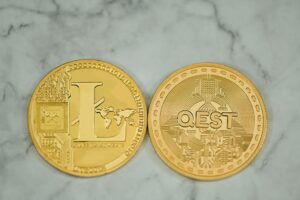Understanding Forex Symbols: A Beginner’s Guide
Forex trading is a popular form of investment that allows individuals to trade currencies from around the world. As a beginner in the forex market, one of the first things you will encounter are forex symbols. These symbols are the key to understanding and navigating the forex market. In this beginner’s guide, we will delve into the world of forex symbols and help you gain a deeper understanding of how they work.
Forex symbols are a combination of letters that represent a specific currency pair. Each currency pair consists of two currencies, the base currency and the quote currency. The base currency is the currency on the left side of the symbol, while the quote currency is on the right side. For example, in the symbol EUR/USD, the base currency is the euro, and the quote currency is the US dollar.
The first step in understanding forex symbols is to familiarize yourself with the most commonly traded currency pairs. These include major currency pairs such as EUR/USD, USD/JPY, and GBP/USD. Major currency pairs are the most liquid and widely traded pairs in the forex market. They often have tight spreads and high liquidity, making them an ideal choice for beginners.
In addition to major currency pairs, there are also minor currency pairs and exotic currency pairs. Minor currency pairs include currencies from smaller economies such as the Australian dollar (AUD), Canadian dollar (CAD), and Swiss franc (CHF). Exotic currency pairs include currencies from emerging or less frequently traded economies such as the South African rand (ZAR), Mexican peso (MXN), and Turkish lira (TRY).
Now that we have a basic understanding of forex symbols and currency pairs, let’s take a closer look at how forex symbols are formatted. Forex symbols typically consist of three letters, with the first two letters representing the country code of the base currency and the last letter representing the country code of the quote currency.
For example, the symbol for the euro against the US dollar is EUR/USD. In this case, “EUR” represents the euro (the base currency) and “USD” represents the US dollar (the quote currency). Similarly, the symbol for the British pound against the Japanese yen is GBP/JPY, where “GBP” represents the British pound (base currency) and “JPY” represents the Japanese yen (quote currency).
It’s important to note that currency symbols can sometimes differ from the standard three-letter country codes. For example, the symbol for the US dollar is always represented as USD, but the symbol for the British pound can be represented as either GBP or £. It is essential to familiarize yourself with these variations to avoid confusion when trading.
In addition to the currency symbols, forex symbols also include numbers that represent the exchange rate between the base and quote currency. For example, if the EUR/USD pair is quoted as 1.2000, it means that one euro is equivalent to 1.2000 US dollars. These numbers constantly fluctuate as the forex market is highly dynamic and influenced by various factors such as economic indicators, geopolitical events, and market sentiment.
As a beginner, understanding forex symbols is crucial for executing trades and analyzing market trends. When looking at a forex symbol, it’s important to consider the base currency and the quote currency, as well as the exchange rate between the two. This information will help you determine the direction of the market and make informed trading decisions.
In conclusion, understanding forex symbols is a fundamental aspect of forex trading. By familiarizing yourself with the various currency pairs, their symbols, and the exchange rates, you will be better equipped to navigate the forex market. Remember to stay updated with global events and economic indicators that can influence currency values. With time and practice, you will gain the necessary skills to analyze forex symbols and execute successful trades.





